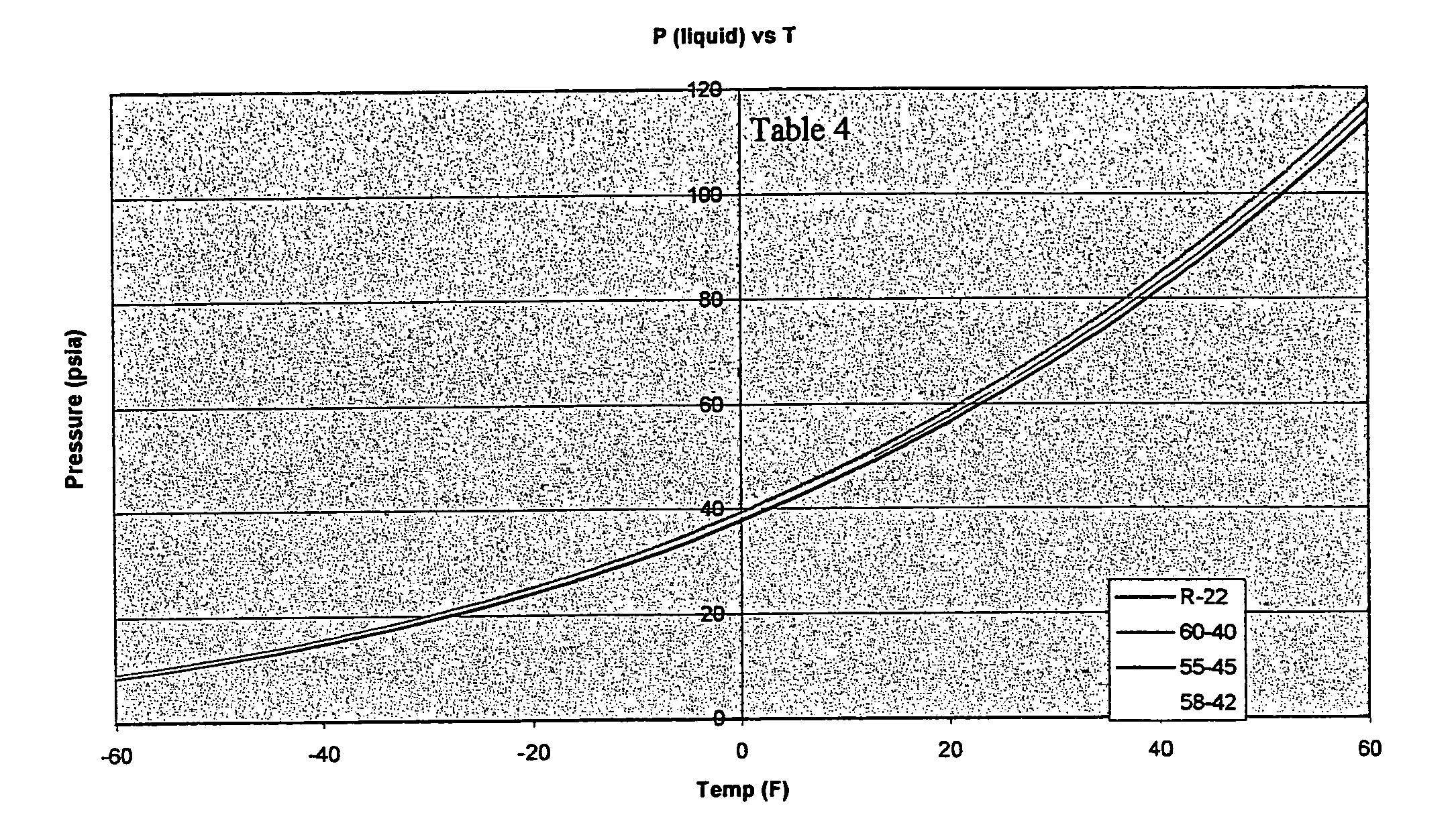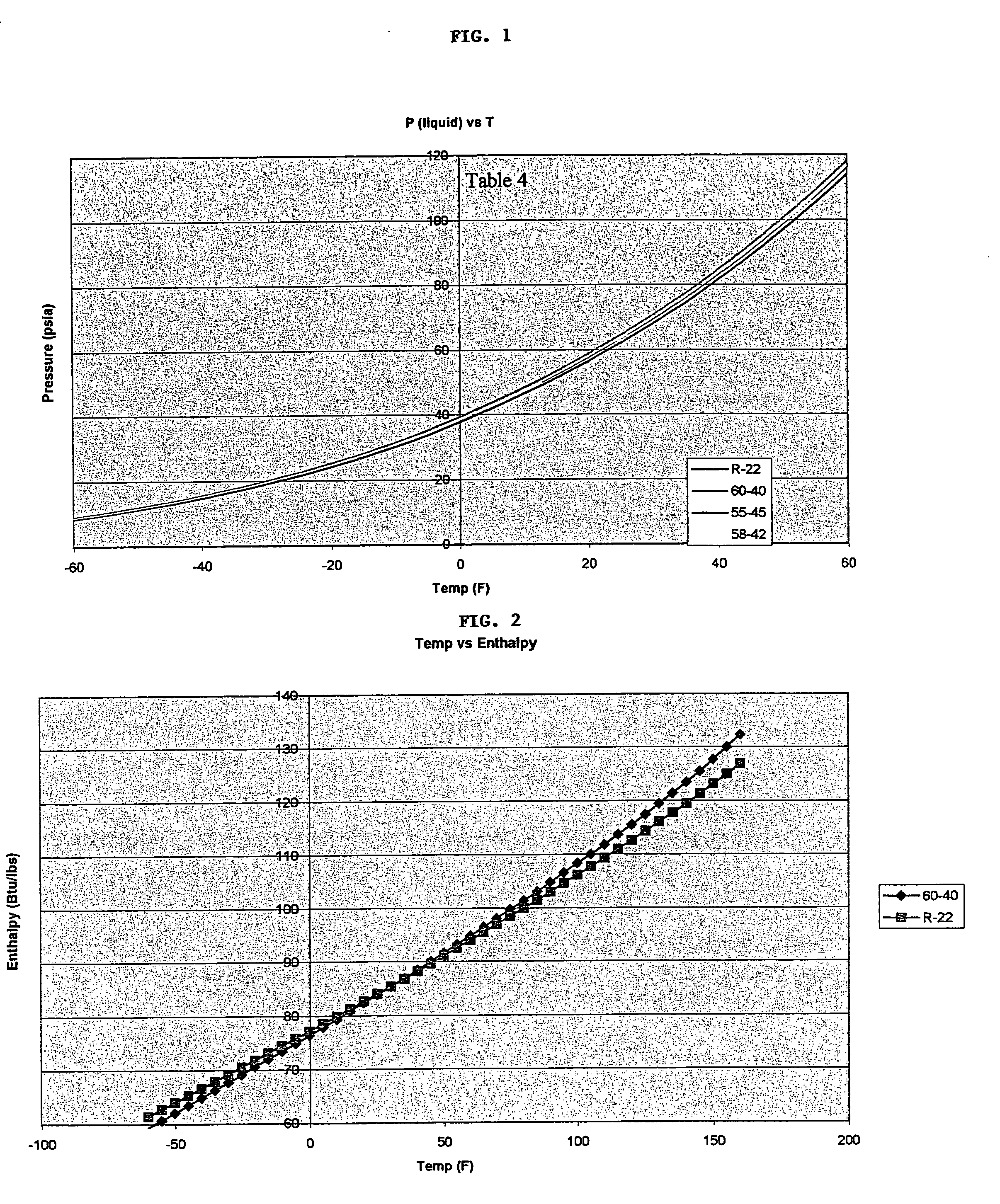Refrigerant with lubricating oil for replacement of R22 refrigerant
a technology of refrigerant and lubricating oil, which is applied in the field of replacement of refrigerant r22 (chlorodifluoromethane) refrigerant, can solve the problems of ozone-damaging chemical, ozone-damaging material, and r-22 (chlorodifluoromethane) being attacked
- Summary
- Abstract
- Description
- Claims
- Application Information
AI Technical Summary
Benefits of technology
Problems solved by technology
Method used
Image
Examples
example 1
[0052] Table 1 summarizes the results of solubility tests of a 2% by weight solution of ROYCO® 2302 oil lubricant in an 58 / 42% by weight mixture of 1,1,1,2-tetrafluoroethane and pentafluoroethane refrigerants. ROYCO® 2302 oil (available from ANDEROL®, Inc., an affiliate of Royal Lubricants Co.), was added to a clear Fisher-Porter pressure burette and a mixture of 1,1,1,2-tetrafluoroethane / pentafluoroethane in an 58 / 42 ratio by weight was introduced under pressure to maintain the liquid state.
TABLE 1Full Buretteclear no separation⅔ Full Buretteclear no separation½ Full Buretteclear no separation⅓ Full Buretteclear no separationAlmost Empty Buretteclear no separation
Note:
The color of the fluid remained the same as the burette was emptied. The expelled gas deposited the oil onto a test panel.
Note: The color of the fluid remained the same as the burette was emptied. The expelled gas deposited the oil onto a test panel.
example 2
[0053] 1,1,1,2-tetrafluoroethane and pentafluoroethane are mixed with the napthenic oil lubricant at set ratios such that the temperature-pressure profile of the mixture is similar to that of Refrigerant R-22 (chlorodifluoromethane), over the normal operating range of air-conditioners. Table 2 summarizes the results of tests of the temperature-pressure profiles of various mixes of 1,1,1,2-tetrafluoroethane and pentafluoroethane over the range of normal air-conditioner working temperatures, from −60 degree. F. to 160. degree. F.
[0054] For Table 2, different percentages of 1,1,1,2-tetrafluoroethane and pentafluoroethane—by weight—were mixed with the lubricant to show the pressure temperature relationships of the various invention combinations.
[0055]FIG. 1 shows Pressure (liquid) vs. Temperature profiles for R-22 and blends of 60 / 40, 55 / 45 and 58 / 42 of tetrafluoroethane and pentafluoroethane, respectively.
[0056]FIG. 2 shows Temperature vs. Enthalpy profiles comparing a blend of 60 / 4...
PUM
| Property | Measurement | Unit |
|---|---|---|
| weight | aaaaa | aaaaa |
| pressure | aaaaa | aaaaa |
| temperature-pressure relationship | aaaaa | aaaaa |
Abstract
Description
Claims
Application Information
 Login to View More
Login to View More - R&D
- Intellectual Property
- Life Sciences
- Materials
- Tech Scout
- Unparalleled Data Quality
- Higher Quality Content
- 60% Fewer Hallucinations
Browse by: Latest US Patents, China's latest patents, Technical Efficacy Thesaurus, Application Domain, Technology Topic, Popular Technical Reports.
© 2025 PatSnap. All rights reserved.Legal|Privacy policy|Modern Slavery Act Transparency Statement|Sitemap|About US| Contact US: help@patsnap.com


